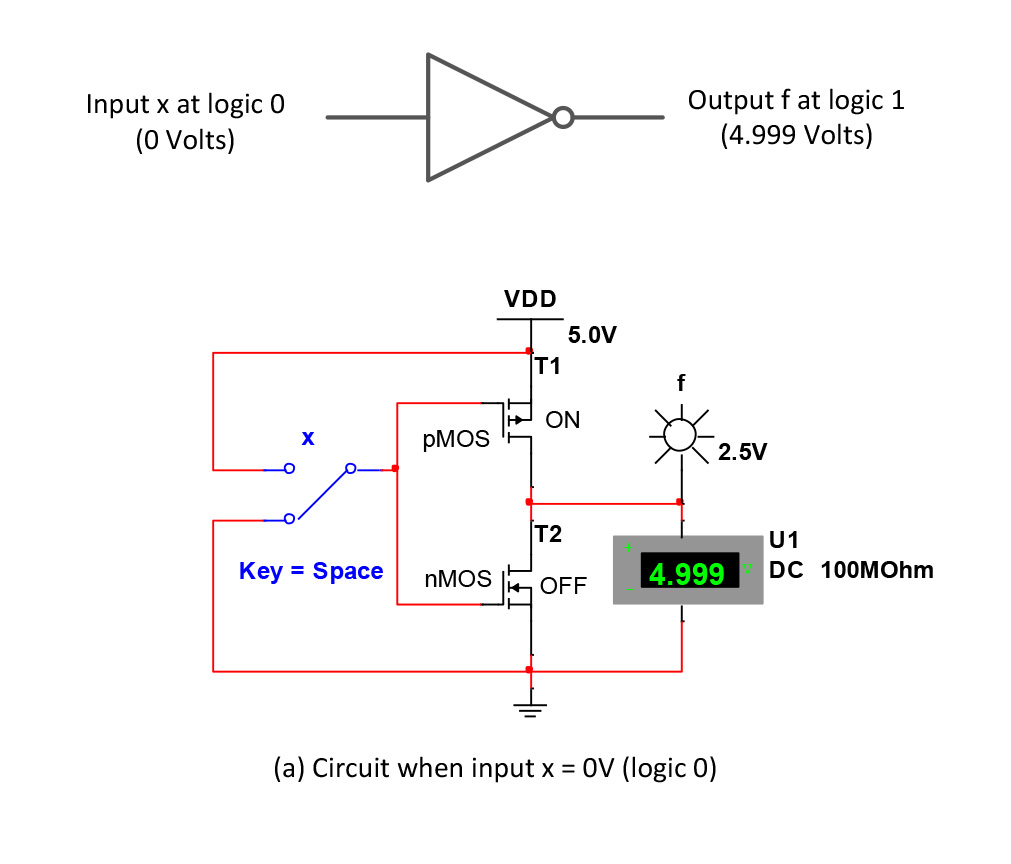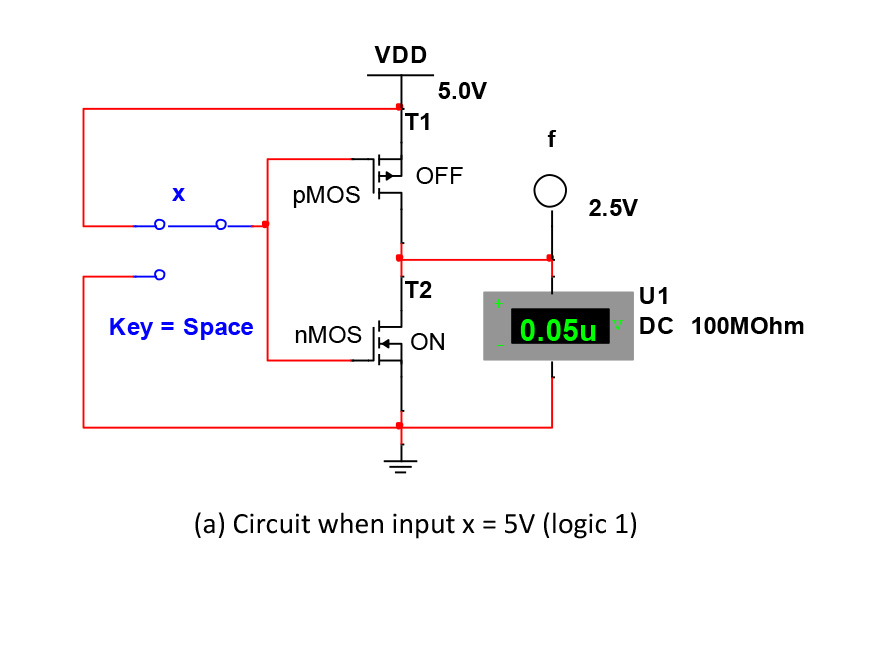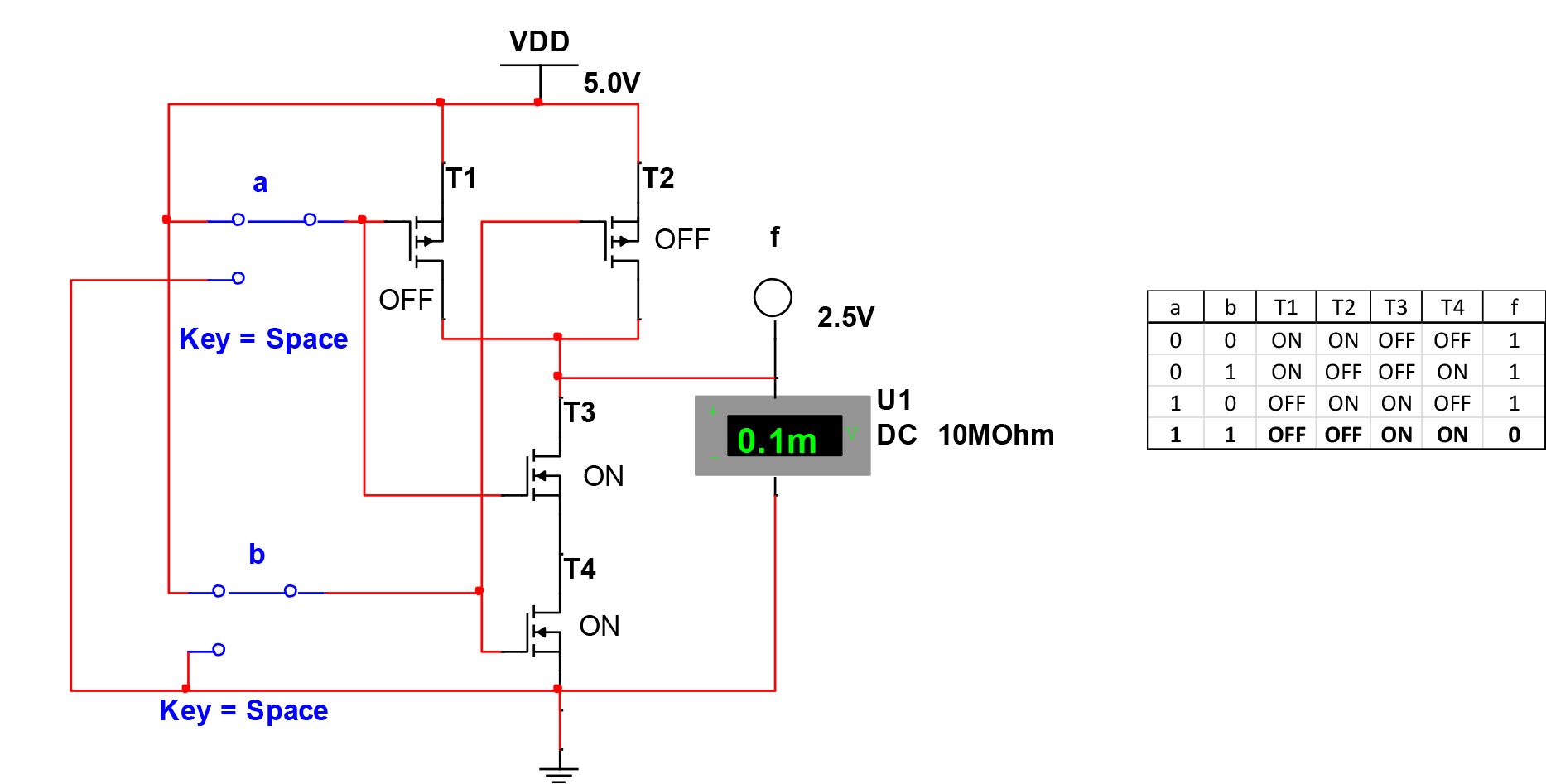I'm completely stumped on where to start with this, any point in the right direction would help. The work gave me a circuit drawn out and asks 2 questions:
1)Determine the number of transistors required to build the Canonical expression 2)Determine the number of transistors required to build the minimal SOP expression
I don't know where to start and have read what I could, I just need some help starting and understanding how to work this out. I can show the circuit if necessary. There's a circuit showing input x at logic 0 (0 Volts) and output f at logic 1 (4.999 Volts) and all the other details like nMOS, pMOS, VDD, off, on, etc. What do I usually need to learn to understand how to find the number of transistors? Sorry for a dumb question because I know how simple this possibly could be.
EDIT:
Here's one of the pictures:




